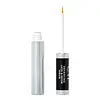What's inside
What's inside
 Key Ingredients
Key Ingredients

 Benefits
Benefits

 Ingredients Side-by-side
Ingredients Side-by-side

Water
Skin ConditioningGlycerin
HumectantPolysorbate 20
EmulsifyingHydroxyethylcellulose
Emulsion StabilisingSodium Hyaluronate
HumectantLarix Europaea Wood Extract
HumectantCamellia Sinensis Leaf Extract
AntimicrobialRicinus Communis Seed Oil
MaskingPanax Ginseng Root Extract
EmollientDisodium EDTA
Sodium Metabisulfite
AntioxidantGlycine
BufferingSodium Nitrate
SoothingZinc Chloride
AntimicrobialGlyoxal
AntimicrobialTromethamine
BufferingPhenoxyethanol
PreservativeCaprylyl Glycol
EmollientEthylhexylglycerin
Skin ConditioningWater, Glycerin, Polysorbate 20, Hydroxyethylcellulose, Sodium Hyaluronate, Larix Europaea Wood Extract, Camellia Sinensis Leaf Extract, Ricinus Communis Seed Oil, Panax Ginseng Root Extract, Disodium EDTA, Sodium Metabisulfite, Glycine, Sodium Nitrate, Zinc Chloride, Glyoxal, Tromethamine, Phenoxyethanol, Caprylyl Glycol, Ethylhexylglycerin
Water
Skin ConditioningPentylene Glycol
Skin ConditioningPropanediol
SolventGlycerin
HumectantButylene Glycol
HumectantMagnolia Officinalis Bark Extract
AntimicrobialGellan Gum
Xanthan Gum
EmulsifyingTrifolium Pratense Extract
Skin ConditioningSprout Extract
AntioxidantSodium Benzoate
MaskingPotassium Sorbate
PreservativeDextran
Acetyl Tetrapeptide-3
Skin ProtectingTrifolium Pratense Flower Extract
AstringentCitric Acid
Buffering
 Reviews
Reviews

Ingredients Explained
These ingredients are found in both products.
Ingredients higher up in an ingredient list are typically present in a larger amount.
Glycerin is already naturally found in your skin. It helps moisturize and protect your skin.
A study from 2016 found glycerin to be more effective as a humectant than AHAs and hyaluronic acid.
As a humectant, it helps the skin stay hydrated by pulling moisture to your skin. The low molecular weight of glycerin allows it to pull moisture into the deeper layers of your skin.
Hydrated skin improves your skin barrier; Your skin barrier helps protect against irritants and bacteria.
Glycerin has also been found to have antimicrobial and antiviral properties. Due to these properties, glycerin is often used in wound and burn treatments.
In cosmetics, glycerin is usually derived from plants such as soybean or palm. However, it can also be sourced from animals, such as tallow or animal fat.
This ingredient is organic, colorless, odorless, and non-toxic.
Glycerin is the name for this ingredient in American English. British English uses Glycerol/Glycerine.
Learn more about GlycerinWater. It's the most common cosmetic ingredient of all. You'll usually see it at the top of ingredient lists, meaning that it makes up the largest part of the product.
So why is it so popular? Water most often acts as a solvent - this means that it helps dissolve other ingredients into the formulation.
You'll also recognize water as that liquid we all need to stay alive. If you see this, drink a glass of water. Stay hydrated!
Learn more about Water